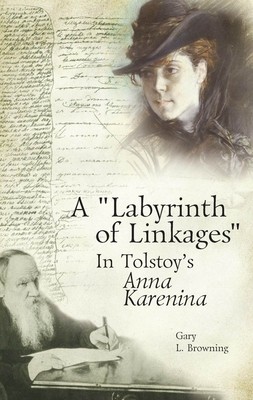
- We will send in 10–14 business days.
- Author: Gary L Browning
- Publisher: Academic Studies Press
- ISBN-10: 1936235471
- ISBN-13: 9781936235476
- Format: 15.6 x 23.4 x 0.7 cm, minkšti viršeliai
- Language: English
- SAVE -10% with code: EXTRA
A Labyrinth of Linkages in Tolstoy's Anna Karenina (e-book) (used book) | bookbook.eu
Reviews
Description
The renowned Russian writer Leo Tolstoy created a realistic masterpiece in Anna Karenina (1878). In the same work, moreover, he utilized allegory and symbol to an extent and at a level of sophistication unknown in his other works. In Browning's study, the author identifies and analyzes previously unnoticed or only briefly mentioned "linkages and keystones" found in two highly developed clusters of symbols, arising from Anna's momentous train ride and peasant nightmares, and of allegories, rooted in Vronsky's disastrous steeplechase. Within this labyrinth of symbol, allegory and structural patterning lies embedded much of the novel's most significant meaning. This study will be of particular interest to students and scholars of Russian literature, Tolstoy, symbol, allegory, structuralism, and moral criticism.
EXTRA 10 % discount with code: EXTRA
The promotion ends in 23d.18:55:30
The discount code is valid when purchasing from 10 €. Discounts do not stack.
- Author: Gary L Browning
- Publisher: Academic Studies Press
- ISBN-10: 1936235471
- ISBN-13: 9781936235476
- Format: 15.6 x 23.4 x 0.7 cm, minkšti viršeliai
- Language: English English
The renowned Russian writer Leo Tolstoy created a realistic masterpiece in Anna Karenina (1878). In the same work, moreover, he utilized allegory and symbol to an extent and at a level of sophistication unknown in his other works. In Browning's study, the author identifies and analyzes previously unnoticed or only briefly mentioned "linkages and keystones" found in two highly developed clusters of symbols, arising from Anna's momentous train ride and peasant nightmares, and of allegories, rooted in Vronsky's disastrous steeplechase. Within this labyrinth of symbol, allegory and structural patterning lies embedded much of the novel's most significant meaning. This study will be of particular interest to students and scholars of Russian literature, Tolstoy, symbol, allegory, structuralism, and moral criticism.


Reviews